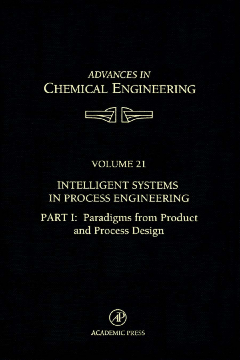
BOOK
Intelligent Systems in Process Engineering, Part I: Paradigms from Product and Process Design
James Wei | John L. Anderson | Morton M. Denn | John H. Seinfeld | James Wei | Chonghun Han | George Stephanopoulos
(1995)
Additional Information
Book Details
Abstract
Volumes 21 and 22 of Advances in Chemical Engineering contain ten prototypical paradigms which integrate ideas and methodologies from artificial intelligence with those from operations research, estimation andcontrol theory, and statistics. Each paradigm has been constructed around an engineering problem, e.g. product design, process design, process operations monitoring, planning, scheduling, or control. Along with the engineering problem, each paradigm advances a specific methodological theme from AI, such as: modeling languages; automation in design; symbolic and quantitative reasoning; inductive and deductive reasoning; searching spaces of discrete solutions; non-monotonic reasoning; analogical learning;empirical learning through neural networks; reasoning in time; and logic in numerical computing. Together the ten paradigms of the two volumes indicate how computers can expand the scope, type, and amount of knowledge that can be articulated and used in solving a broad range of engineering problems.
- Sets the foundations for the development of computer-aided tools for solving a number of distinct engineering problems
- Exposes the reader to a variety of AI techniques in automatic modeling, searching, reasoning, and learning
- The product of ten-years experience in integrating AI into process engineering
- Offers expanded and realistic formulations of real-world problems
"By scanning the progression of topics from the earliest volumes to the present one, it is possible to gain a perspective on the growth and evolution of chemical engineering from artful practice to rigorous science. During these past two decades the field has become one of the premier applied sciences by virtue of its vigor and scope. The contents of this latest volume provide strong evidence for this evolution...The scope of this volume is impressive...It is a scope that is reflective of the current state of chemical engineering science." --JOURNAL OF AMERICAN CHEMISTRY SOCIETY
"A great deal of care has gone into the preparation of the contributions, and these prove to be both readable and informative...I strongly commendthis book to all involved in teaching or research in chemical engineering." --CHEMICAL ENGINEERING SCIENCE
